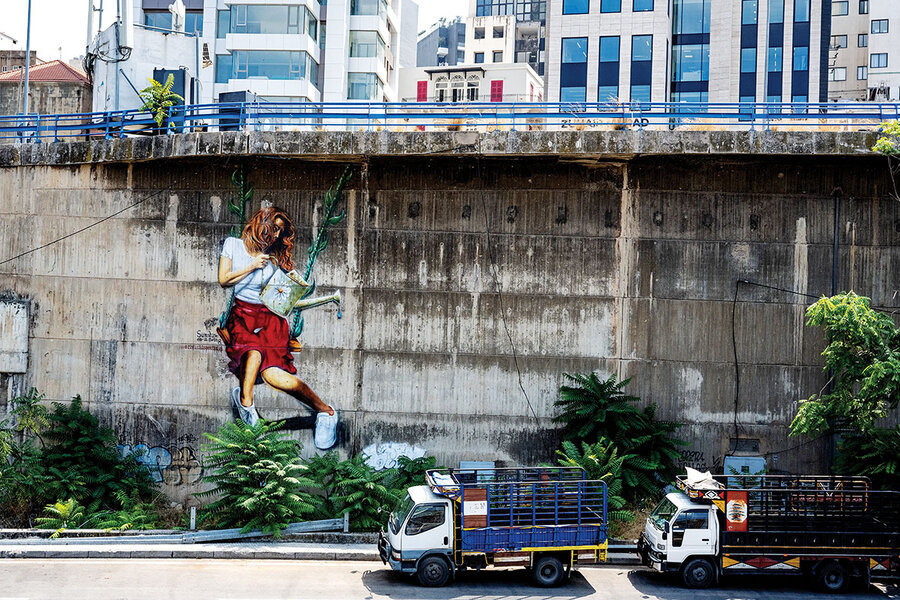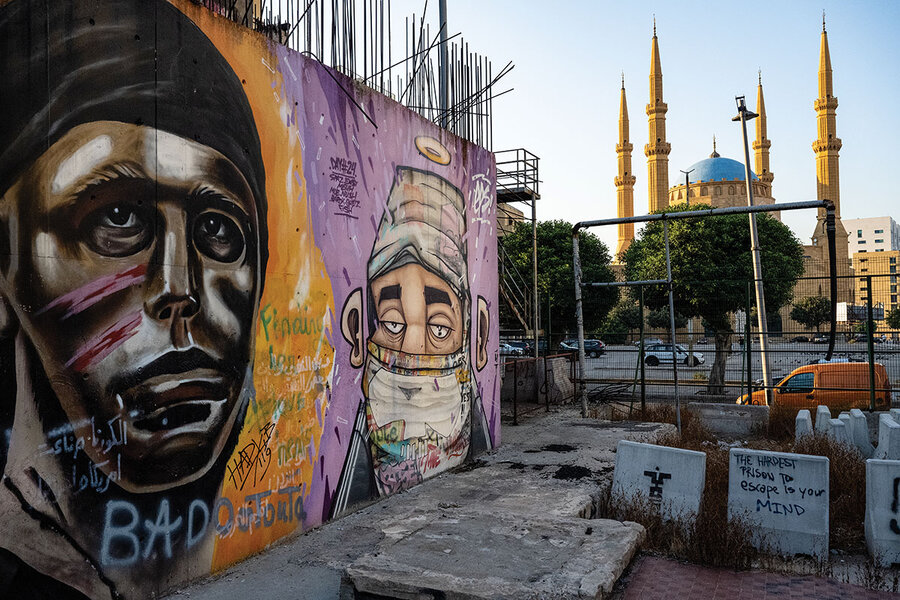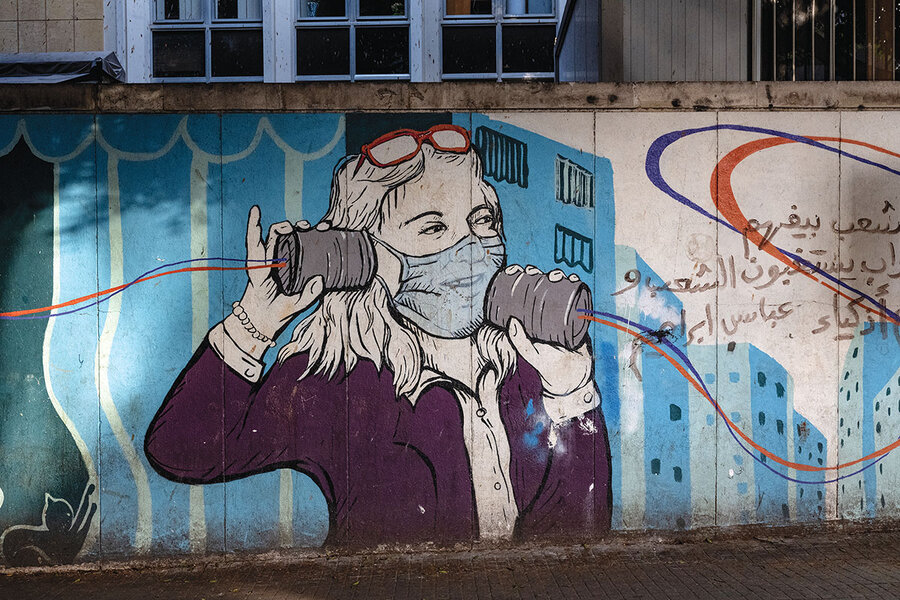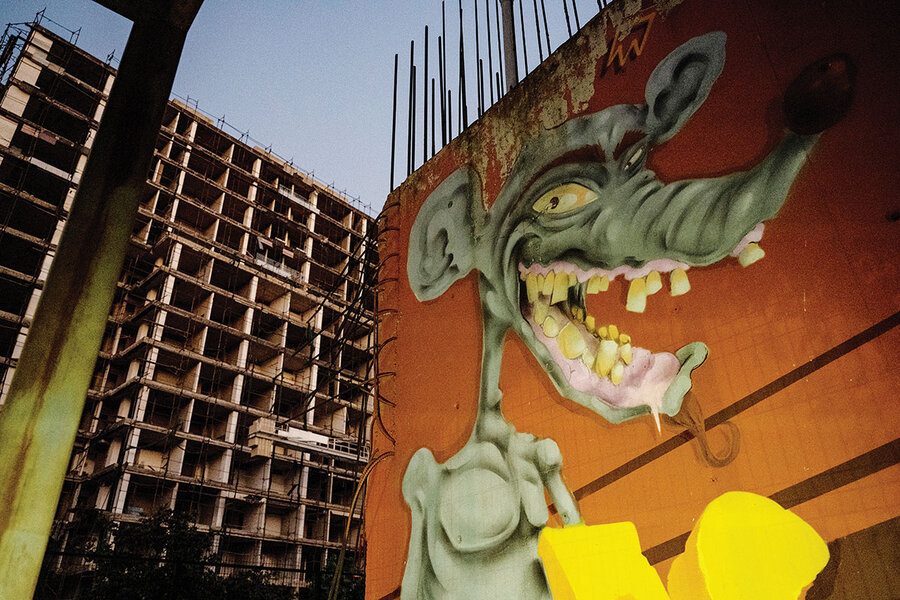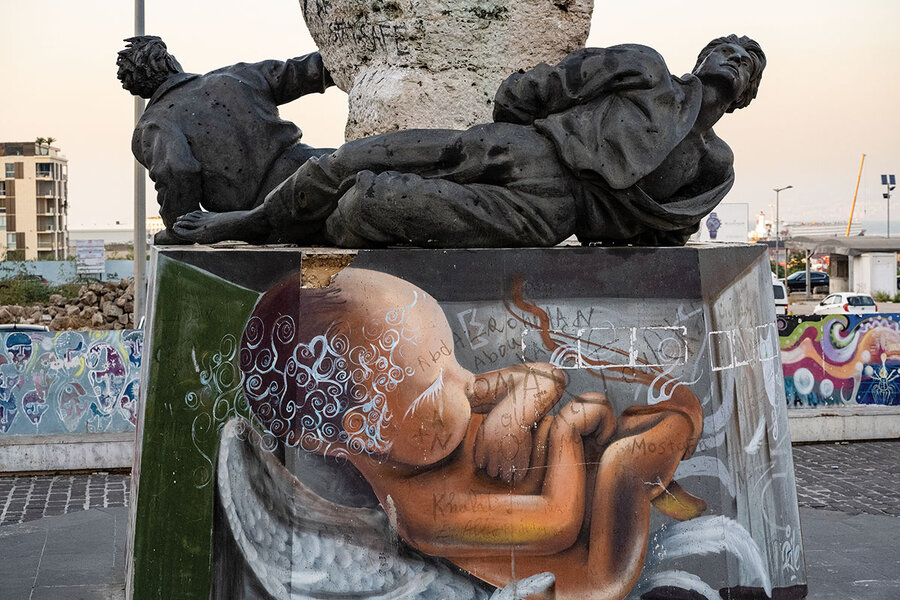In Pictures: In Lebanon, the art of resistance endures
Loading...
| Beirut
In the years since Lebanon’s self-declared “October Revolution,” the country has been engulfed by a multitude of crises.
Three-quarters of the population has since been pushed below the poverty line, and shortages, power cuts, and surging prices have become facts of life.
Why We Wrote This
A story focused onProtests in the streets of Beirut may feel like a distant memory, as myriad crises have befallen the Lebanese people. But the spirit of the 2019 “October Revolution” lives on in the city’s vibrant – and defiant – murals.
Frustrated Lebanese citizens have even held up banks to withdraw their own money. As protests and the hope for change have dissipated, one constant has been vibrant, anti-government graffiti: spray-painted howls of anger and protest.
Expand this story to view the full photo essay.
Rarely have so many Lebanese turned out on the streets to demand wholesale political change as when they began their self-declared “October Revolution” of 2019. And rarely has there been so little positive result.
In recent years, Lebanon has been engulfed by a multitude of crises, starting with economic collapse in late 2019. The following year brought the COVID-19 pandemic. And in August 2020 came the second-largest nonnuclear explosion ever recorded, when illegally stored ammonium nitrate at the Port of Beirut exploded, taking more than 200 lives, forcing 300,000 from their homes, and leaving some $15 billion in damage.
Three-quarters of the population has since been pushed below the poverty line, and shortages, power cuts, and surging prices have become facts of life.
As protests and the hope for change have dissipated, and frustrated Lebanese citizens even held up banks to withdraw their own cash, one constant has been vibrant, anti-government graffiti: spray-painted howls of anger and protest.
Everywhere you look in the capital Beirut are reminders of people’s abiding distaste for their rulers, their banks, and a political elite that one analyst notes has chosen to “do nothing,” rather than “risk losing control over a system which has served them so well for so long.”




